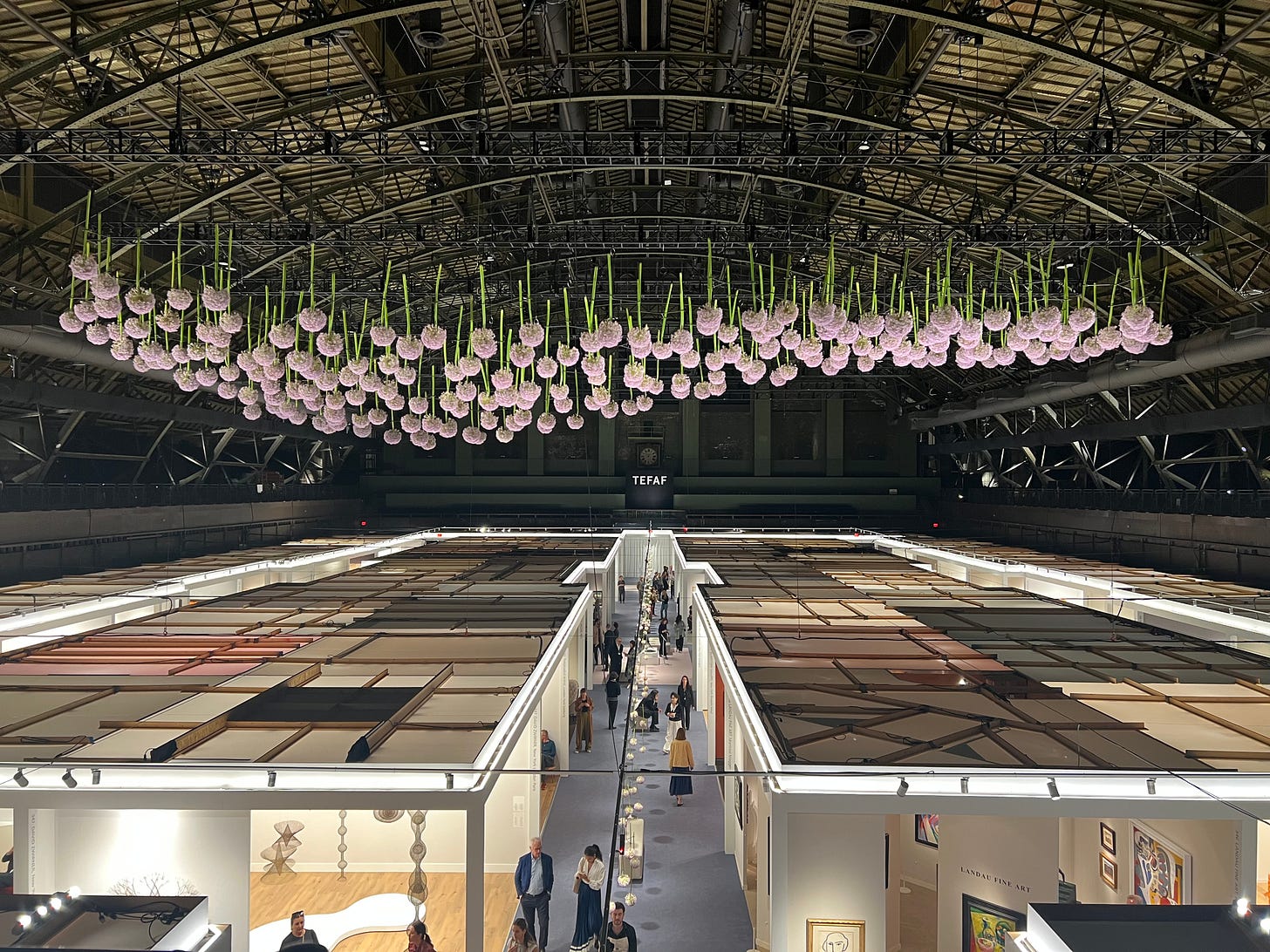The big art fairs have become bona fide brands, platforms for culture, community - and yes moneymaking. Art Basel understands this. Frieze too. (I can't wait to see what Ari Emanuel will do with it.)
And while it’s easy to overlook this with the hype and hoopla around these and smaller shows, the heart of the brand is the show.
But from Miami to Maastricht, the layout, mood, and experience are nearly interchangeable. A neutral-hued maze of booths, some light programming, a VIP lounge, and footsore gallerists counting the seconds till close while scrolling, scrolling.
In nearly every other public-facing cultural arena—retail, museums, even heritage destinations—change has come. But too many art and design fairs have clung to a rinse-repeat formula, even as participation costs for galleries soar and direct sales drop. Visitorship may be up in spots, but engagement is stagnant. Even the aficionados look bored. Where is the energy, the excitement?
The art fair world largely knows that something has to give. And they’ve tried, most notably with programming (largely for VIPs) around the show - talks, events, cultural insider flexes. And while the 1:1 appointments and celebrity parties do attract the whales and the whale-lets, even well-heeled younger or new-to-collecting audiences aren’t being enticed to come—or to care.
Yes there have been tweaks around the edges, but if these shows want to cultivate the next generation of collectors, or even just curiosity, they need to evolve. Not just to sell, but to seduce. And not just for now, but for the long term.
Create a new world
Have an identity. Lean into brand. What is the narrative, what is it you stand for – other than dealers in boxes? Quality of curation (TEFAF) is just one dimension. Consciously set out to differentiate. Then set that through every touchpoint from marketing to after-show activations and communications.
Rethink the layout. The traditional grid of identical booths is orderly but uninspired—not unlike a suburban mall. Look instead to visionary retail, theme parks, urban planning. Interest lies in rhythm, not repetition. Inject surprise or a twist. Add mystery. Blow out some walls (Art Basel) and force people to zig zag. Offer tiny booths that feel like mysterious shops down alleys off the big boulevard (don’t shove them all in the back, please.) Dover Street Market NY understands this. So does Alcova.
Create neighborhoods. Great cities have distinct quarters. So should fairs (and in fairness, the bigger ones do, though it’s cetainly not a standard). Whether by visual theme, curatorial approach, or artistic medium, segment the show into emotionally and visually distinct zones. Then change them up year after year.
Pace the experience. Don’t blow all the excitement at the entrance. One of the original FOG Fairs featured designer Ken Fulk’s re-creation of artist studios at the opening. It was brilliant—but diverted attention from what came after. Introduce discovery, crescendo, and reward throughout. A dark corner. A sudden vista. A sound installation tucked behind a tapestry. Life peaks with surprise. Think 10 Corso Como, Rosanna Orlandi. Surprises everywhere.
Beyond the art
Mix it up. Pop-ups (fixed or roving), immersive installations, demonstrations, branded activations—done right, they add, not distract. From piercing stations, tarot, and foosball to Prada to local indie design shops, these kinds of activations (particularly those that tap into the five senses – not just the visual one) inject life and visibility.
Embrace the shoppies. People want to buy. Books, small works, fragrances, jewelry, even a cheeky bit of merch—ideally clever, beautifully designed, and connected to the show’s theme. No, it won’t cannibalize serious sales: it’ll complement them, even re-energize them. Just don’t relegate it to a sad corner with awful lighting. Tuck them (yes, more than one) into the main event.
Cater to the introvert, too. Not everyone is an extrovert. Create true quiet, low distraction spaces. Remove the sensory overload. Give people places to look out, settle down, take a breath. It’s not just about aesthetics—it’s about empathy. And if you’re lucky, they won’t be tugging at the art lover’s sleeve to leave.
End notes
Peak End. Create a memorable exit. Behavioral economists have found it’s not so much the beginnings that count, as endings. It can be so much better than a bad coat check check-out, sad exit, and an email saying “we’ll see you next year.” You’re in the hospitality business, in the community business. Kindness and delight go a long way.
The art and design world knows how to craft, curate and sell objects. Now it needs to craft experiences. That means treating the fair itself as a living, breathing cultural product—one that evolves, experiments, and yes, entertains.
Because if the shows must go on, they should do so with more theater, more play, more thrill. A little more bread. A little more circus.
Next up: what gallerists could do better in those booths.


